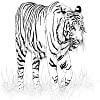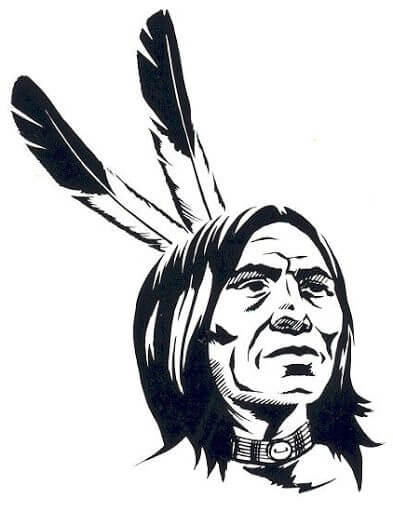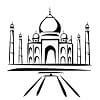- Home
- Holiday Ideas
-
-
- Choose Your Traveling Theme
-
- Adventure Tourism
-
- Cultural Tourism
-
- Tour Packages
-
-
- Packages by State
-
- Holidays by Interest
-
- Popular Tour Packages
-
- Fair And Festivals
-
- Ayurveda And Yoga
-
- Offers
-
- Destinations
-
Badrinath
Of spirituality and prayer
Badrinath
A perfect blend of divinity and serenity, the picturesque town of Badrinath in Uttarakhand’s Chamoli district, prides itself together of the foremost visited tourist destinations of India. Considered because the abode of Lord Vishnu, Badrinath is among the holy shrines of the char Dham pilgrimage undertaken by devotees.
Nestled between the Nar and Narayan mountain ranges and sprawled along River Alaknanda, Badrinath is home to a number of the foremost impressive peaks of the Garhwal Himalayas, including the majestic Neelkanth peak. a simple trek takes pilgrims to the Badrinath Temple, one among the foremost revered religious sites of Hindus.
A number of mythical tales are related to the town. consistent with mythological belief, Lord Vishnu had come to meditate in Badrinath after sage Narada told him that he was tilting unnecessarily towards worldly pleasures. Another tale suggests that Lord Shiva was unseated by Lord Vishnu from Badrinath after which Lord Shiva was forced to maneuver to Kedarnath.
Surrounded by beautiful scenery, snow-capped peaks and water bodies, Badrinath holds rare charms and continues to be a particularly popular pilgrimage spot.
How to get there ?
By Air
Around 317 km away is the Jolly Grant Airport near Dehradun. Flights from several major Indian cities land here.
By Road
The major cities of north India are well-connected to Badrinath. One can use buses that ply regularly from Delhi, Haridwar and Rishikesh to Badrinath.
Rail
The Rishikesh Railway Station is 297 km away while Kotdwar Railway Station is at a distance of 327 km.
Attractions

Valley of Flowers
With the majestic Zanskar home in the backdrop, the planet Heritage Site of Valley of Flowers lies at a powerful altitude of around 11,000 ft. Resembling an artist’s canvas, the valley is sort of a flood of colourful hues that are held together by snowy mountain peaks and white glaciers. it’s located between the conversion point of the Himalayan ranges, Zanskar and therefore the Western and Eastern Himalayas and is made by the Pushpawati stream. In August and September, the valley comes alive when thousands of flowers are fully bloom. Besides popular species of ferns, dwarf iris, dwarf larkspur, dwarf rhododendrons, primula, blue poppies, one also can find thousands of shrubs, orchids and plants in beautiful shades. it had been Frank Smythe, an English mountaineer, who discovered this beautiful place in 1931 when he was returning after completing an expedition to Mt Kamet.
A popular trek to the present paradisiacal place takes travellers through gorgeous landscapes, where they get the prospect to sight rare and exotic Himalayan flora.For the avid trekker, the somewhat difficult treks are rewarded by numerous scenes of cascading waterfalls, streams and flowery meadows around every corner of the landscape.
Tapt Kund
Believed to be the abode of Lord Agni or the hearth god, the Tapt Kund lies in close proximity to the Badrinath shrine. Devotees often take a dip during this natural hot spring before getting to worship at the temple. it’s a well-liked belief that taking a shower within the water of this kund will relieve devotees of their sins. At any point in time, one can find several devotees taking a dip within the kund.
Tapt Kund is additionally famous for its medicinal properties and therefore the water is claimed to cure different sorts of skin allergies. The temperature is a mean of 55 degree Centigrade within the pond while the temperature everywhere around is usually around 9-10 degree Centigrade .


Neelkanth
One of the main peaks of the Garhwal Himalayas, Mount Neelkanth stands at an altitude of 6,507 m. The snow-clad peak rises just above the Badrinath Temple and is popularly referred to as the Garhwal Queen. due to its pyramidical shape, devotees travelling to the Badrinath Temple believe that the mountain gives the impression of Lord Shiva sitting on the cliffs, which is additionally why it’s been named after the lord. the primary rays of the sun fall on the Neelkanth Peak, and therefore the spectacular scene is actually a blissful sight. Famous English mountaineer, Frank Smythe, described the Neelkanth Peak as second only to Siniolchu (in Sikkim) in Himalayan beauty. the ten km Neelkanth trek is one among the simplest trekking trails in Uttarakhand.
Hemkund Sahib
Hemkund Sahib, formally referred to as Gurudwara Sri Hemkund Sahib may be a highly-revered pilgrimage site for the Sikh community. it’s believed that Guru Gobind Singh ji, the tenth guru of the Sikhs, spent 10 years in meditation here. What adds to the recognition of the religious site is its stunning location surrounded by the Garhwal Himalayas. Hemkund Sahib is nestled between the peaks of the Hemkund Parvat. The name ‘Hemkund’ means lake of snow and therefore the waters are literally ice cold. The gurudwara is visited by an outsized number of devotees from all corners of the country before it closes down for the winter season between October and April. Sikh pilgrims reach the gurudwara to assist repair the trail which is usually left damaged after the winter season. The gurudwara also houses a scenic lake where devotees take a holy dip. it’s believed that the place once wont to be a meditation ground for Lord Rama’s brother, Lakshmana. a close-by temple dedicated to Lord Lakshmana also can be visited during a visit to Hemkund Sahib.


Badrinath Temple
According to ancient texts, there are many spots of pilgrimage in heaven, earth and therefore the world, but there has been none adequate to Badri (as it’s popularly called), nor shall there be. Dedicated to Lord Vishnu, the Badrinath Temple is one among the foremost important pilgrimage sites in India. it’s among the four holy places or char dham, which are much revered by Hindus. Devotees undertake a strenuous journey through the mighty Himalayas to succeed in this holy shrine.
The Badrinath Temple is made to resemble a cone with alittle cupola of a gilt bull and spire. There are several stories tracing their origin to the Vedic age, but public opinion suggests that it had been Guru Adi Shankaracharya who established it within the 9th century.
It is divided into three sections – the garbha grih or sanctum sanctorum, darshan mandap or puja hall and sabha mandap where devotees assemble. this structure is claimed to possess been built by the kings of Garhwal. One will find the idol of Lord Badrinath, also called Badri Vishal, with two arms lifted up, holding the shankh (conch) and therefore the chakra. Two of his arms rest on his lap within the yogamudra. Made in black stone, the most idol of Lord Vishnu is seen sitting in meditation. The temple also houses idols of mythical bird Garuda, Lord Narayan’s vehicle, Adi Shankaracharya, Swami Desikan and Shri Ramanujam.
WANT TO RENT A CAR IN INDIA ?
Choose Your Traveling Theme

 TOUR BOOKING
TOUR BOOKING















